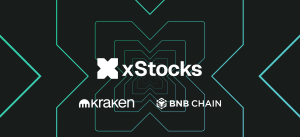DeFi Coverage Aggregator Bright Union Launches Mainnet
The decentralized finance (DeFi) coverage aggregator Bright Union has launched its highly anticipated mainnet. In the lead-up to this launch, Bright Union announced partnerships with three DeFi coverage protocols including Nexus Mutual, Bridge Mutual, and InsurAce. Collectively, these protocols have already sold over $500 million worth of covers.
These partnerships allow Bright Union to match DeFi coverage policy buyers and providers with over 130 coverage products, the most extensive supply of crypto coverage in the current marketplace, accounting for around 90% of the DeFi coverage market. In addition to furnishing a multi-chain compatible one-stop-shop for DeFi coverage, Bright Union will develop a bespoke series of innovative products such as the Bright Risk Index, portfolio coverage for institutional DeFi users, as well as DeFi coverage infrastructure allowing other DeFi protocols to sell directly to their users.
Why the DeFi Community Needs Coverage
Blockchains are secure and immutable networks that allow for transactions to be made and records to be kept in a transparent and decentralized manner. Most blockchains developed after Bitcoin, like Ethereum, are Turing complete, which means they can act as a computer that executes code in the form of a smart contract.
Smart contracts make DeFi services possible, but great care is necessary when coding these contracts, since bad actors can find creative ways to exploit a dApp’s code to their advantage. As DeFi services become more sophisticated, the code for these services becomes more complex, which means attackers can find more ways to exploit a smart contract and siphon funds.
One exploit perpetrated in August resulted in over $600 million in tokens moving from the Poly Network to the exploiter’s wallet when the attacker discovered a way to trick a cross-chain smart contract into giving them access to Poly’s liquidity wallets. Luckily, the perpetrator returned the stolen funds, but this is not how exploits usually play out, and assets lost to an exploit are often irretrievable.
The threat of falling victim to an exploit can be a constant worry for those who deposit their assets into smart contracts. Similar to how dollars and euros deposited into traditional banks are protected by independent agencies, like the FDIC in the US or FSCS in the UK, being able to insure one’s position against black swan events and mitigate the risks of participating in DeFi could mean a huge step forward for drawing new users and funds into this nascent financial sector.
Could Coverage Become DeFi’s Next Big Breakthrough?
In 2016, Ethereum implemented a hard fork in order to reverse an exploit and return stolen funds (around 15% of all ETH in existence at the time) that were taken from a short-lived project called The DAO. This decision to fork Ethereum to recoup lost ETH was so controversial that it led to a division in the Ethereum community, and this is why Ethereum Classic exists today.
Considering the growth of dApps and TVL on Ethereum’s network since 2016, it’s highly unlikely that such a drastic measure as a hard fork will be taken again to remedy the exploit of a single project’s smart contract. In lieu of other options, DeFi coverage is taking the spotlight as the best way forward for users to gain peace of mind, and the market for it is growing.
Assets protected by DeFi coverage have grown tenfold since the beginning of 2021, from $60 million in January to around $650 million at the time of writing. However, the entire DeFi market is currently valued at over $160 billion in total value locked (TVL), which means that less than one percent of the DeFi market is insured.
Bright Union Shines a Light on the Future of DeFi Coverage
DeFi coverage protocols can be complex products. Bright Union recommends coverage that matches each user’s needs by analyzing their wallets and providing options for appropriate coverage. Investors can then weigh terms and rates from selected offers and choose the best deal.
“DeFi is complicated, and the concept of Decentralized Insurance is not a simple one either. We’re making it easy for customers to understand, compare and choose what fits best. If you participate in DeFi, covering your position against black swan events is a necessity,” explains Kiril Ivanov, Co-Founder of Bright Union.
In the future, Bright Union’s roadmap will include services that are open to the entire DeFi community, with premium services reserved for members of its DAO. The increased benefits from these services will reflect the amount a user has staked in the DAO, and these benefits include buying/selling coverage at a discount and excess of loss collateral that lowers DAO members’ capital requirements for providing coverage, similar to a reinsurance scheme in traditional finance.
Bright Union is built on Ethereum and will be compatible with BSC, Polkadot, Solana, and XDai in the future. The September 14th launch of the Bright Union mainnet will make smart contract and stablecoin coverage more accessible to the DeFi community as it continues to grow across multiple chains with new and possibly vulnerable smart contracts being written every day.
Image by Gerd Altmann from Pixabay

